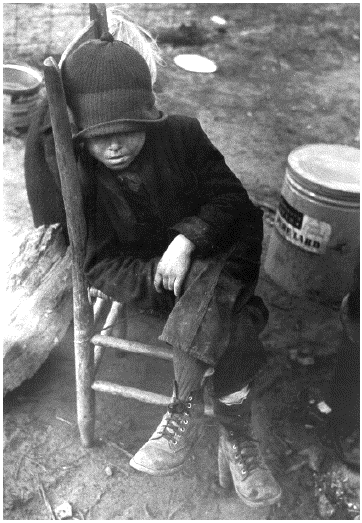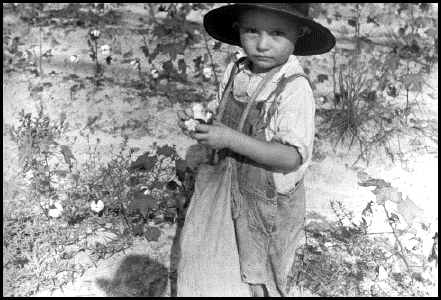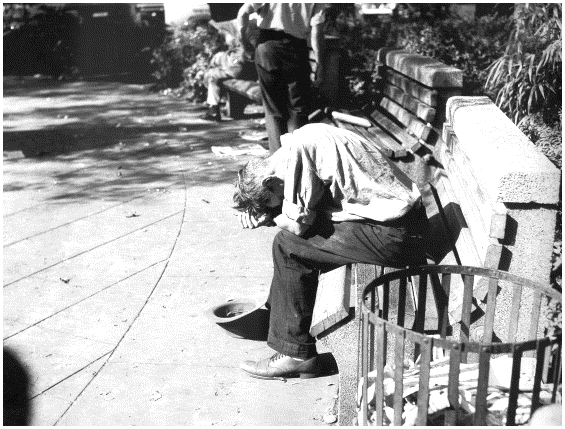The Depression
Kathleen Thompson,
Hilary MacAustin,
Editors
(Indiana University Press)

In 1932, Clarence E. Pickett reported to Congress that --- depending on the school --- 20 - 90 percent of the children that the American Friends Service Committee had surveyed were underweight, suffering from rickets, pellagra, malnutrition, lethargy and sleeplessness.
Over 15,000 young people were working in saw-mills, another 15,000 mining coal, and 5,000 more in steel mills. Younger children were paid less than the older ones --- in some cases they received not much more than 50¢ a week. Wages were as low as two cents an hour.

Between 1935 and 1943, the RA and the FSA made more than 200,000 photographs of American life --- an astonishing record of the good and the bad of the U. S. The photographs were generally superb and the photographers given immense latitude in what they were to record.The photographs chosen to appear in Children of the Depression number well over a hundred. They are presented with respect and grace, and not a few are genuine heart-breakers. They are interspersed with quotes from oral histories of those who lived through the Depression, along with letters in government files, addressed to those in Washington, D. C. One, dated 20 January 1938, was sent to Eleanor Roosevelt:
I am writing this letter in hopes that you will answer in my favor. My father H. C. has been in bed from a stroke for almost a year. We have no money and my brother works but makes $3.00 a week and there are eight in our family. My step-mother is very good to me and I try to help her. She takes in washings and I have to walk for six or eight blocks and then carry the washings home. I have to go of a morning before school and it has been very cold here. If you would send me a bicycle to ride when I go after washings for her I shall appreciate it. I am in eighth grade at school and work very hard to make passing grades. The Principal of the school bought two of my sisters and me a pair of slippers so we would not have to stay at home. If you would do this for me I shall be able to help my step-mother more. If you send me one I would like a girls bicycle. I am about 4 feet 3 inches tall so if you send me one you can judge as to what size.
A. L. C.
